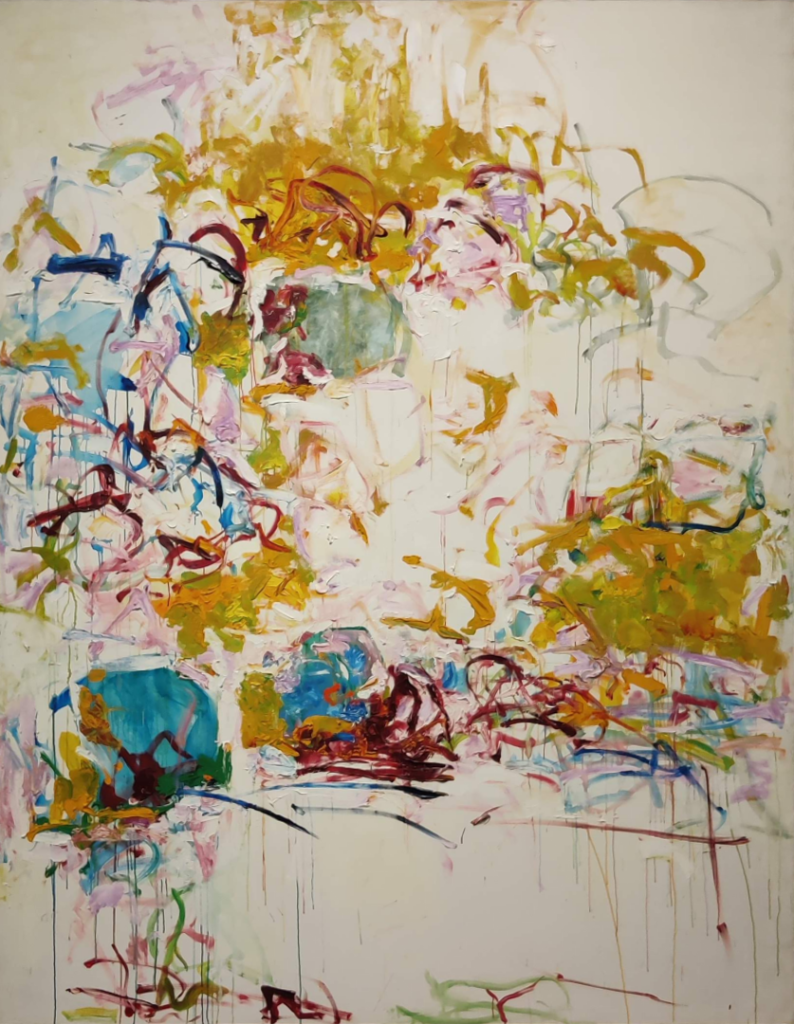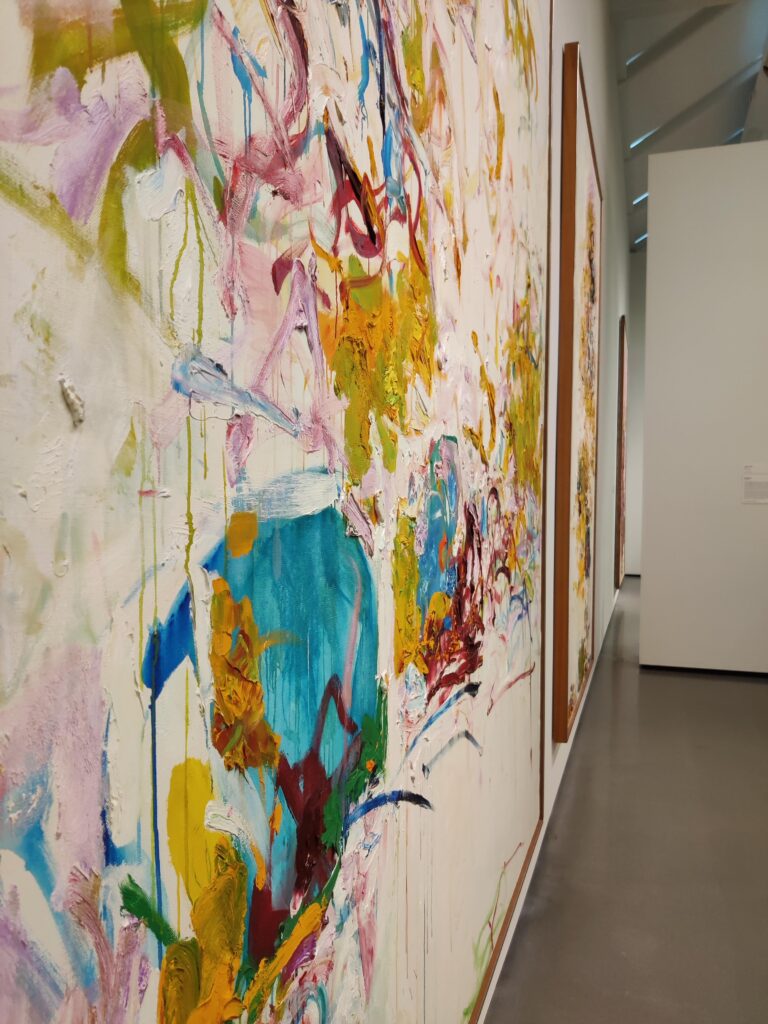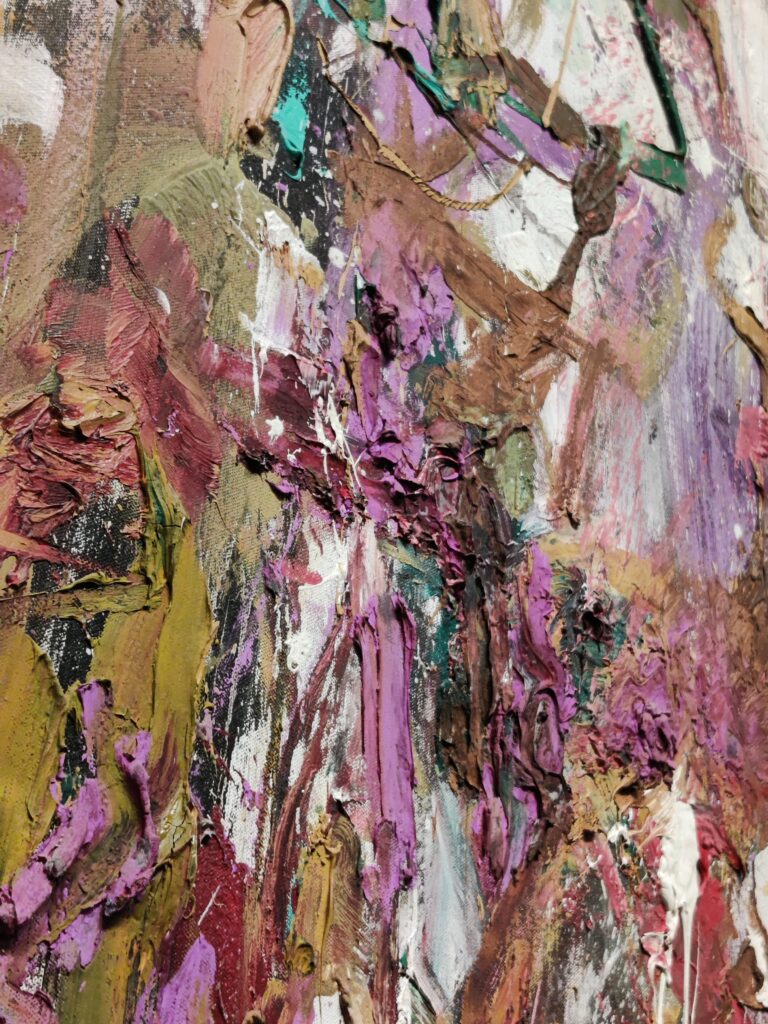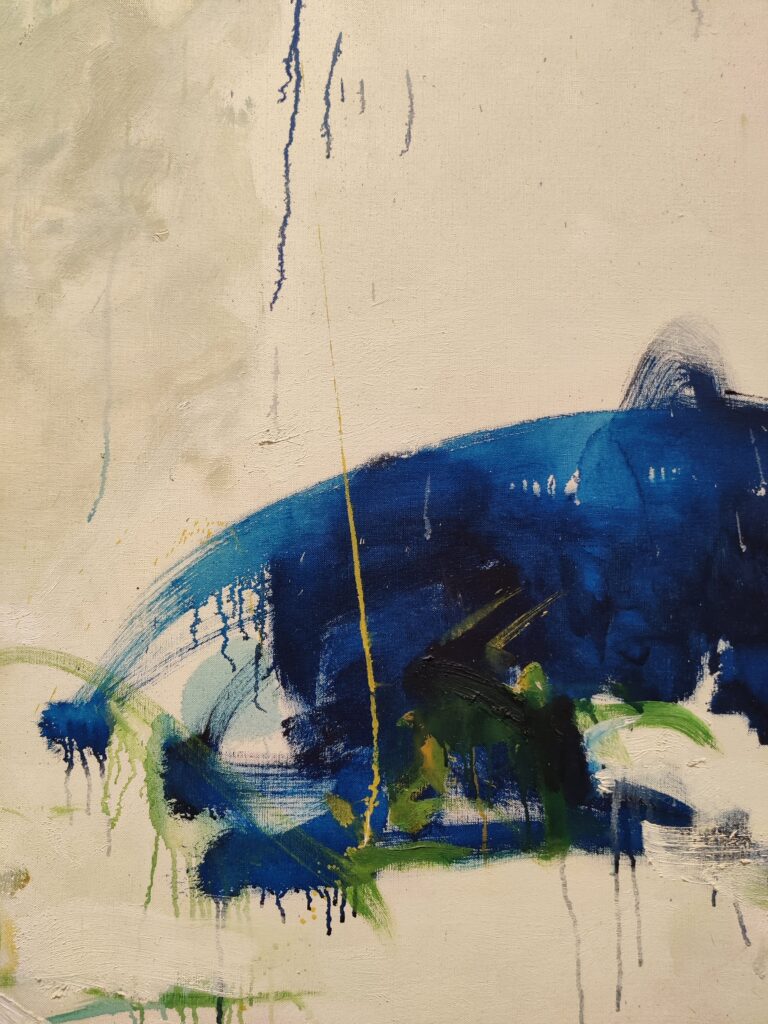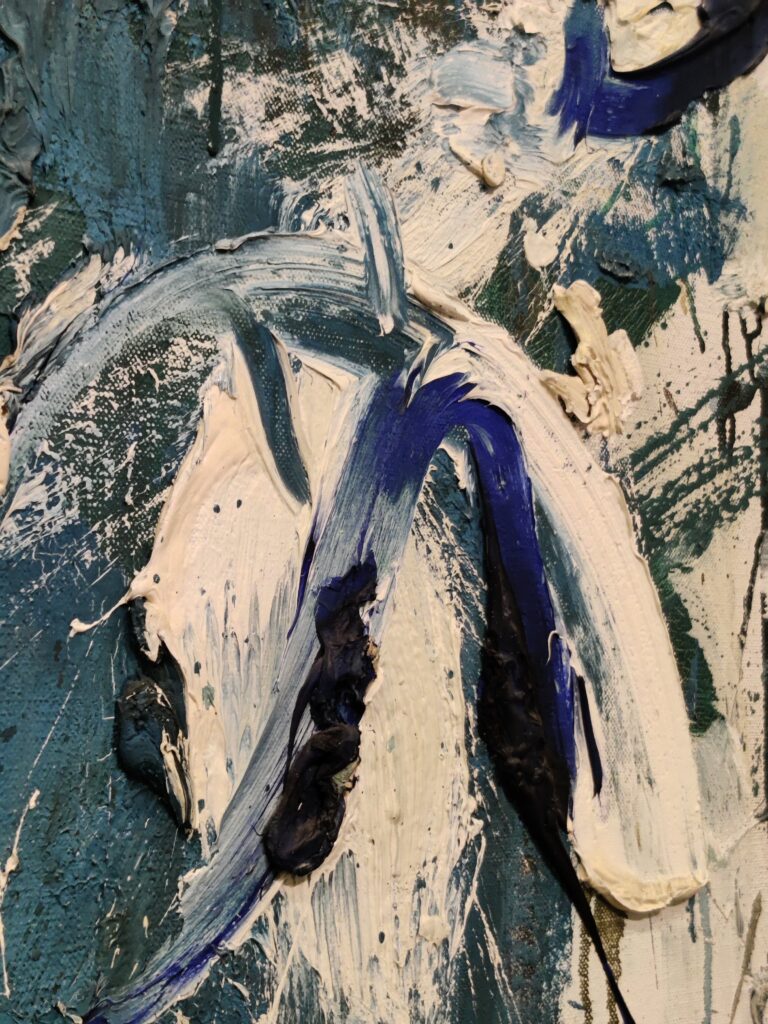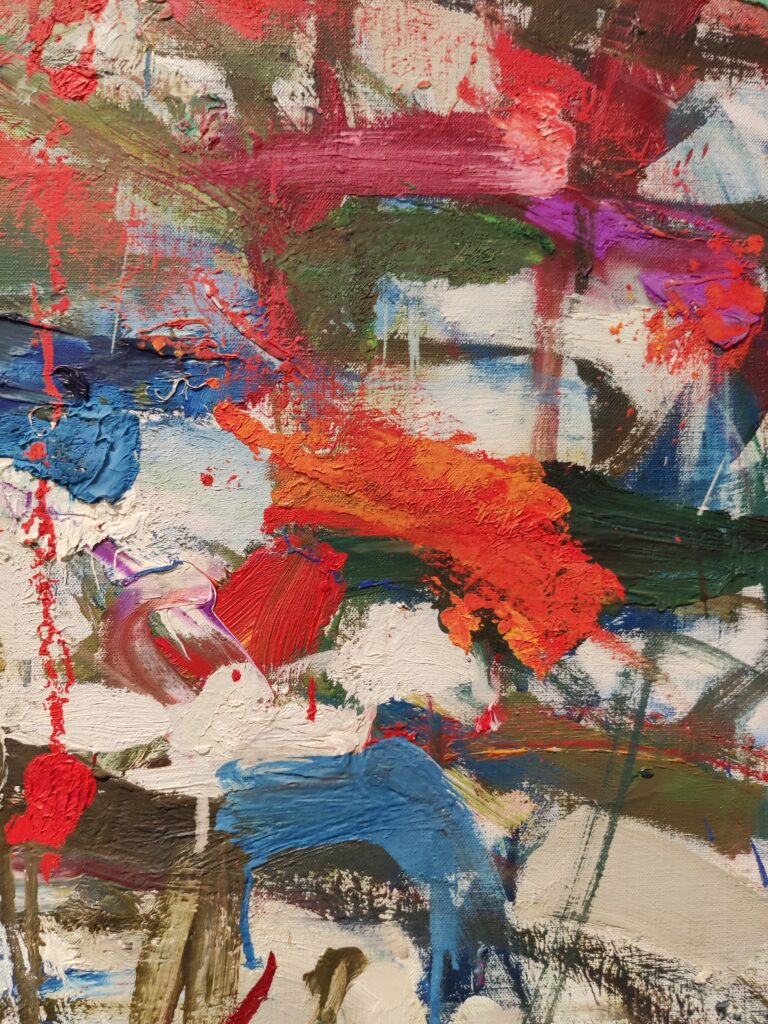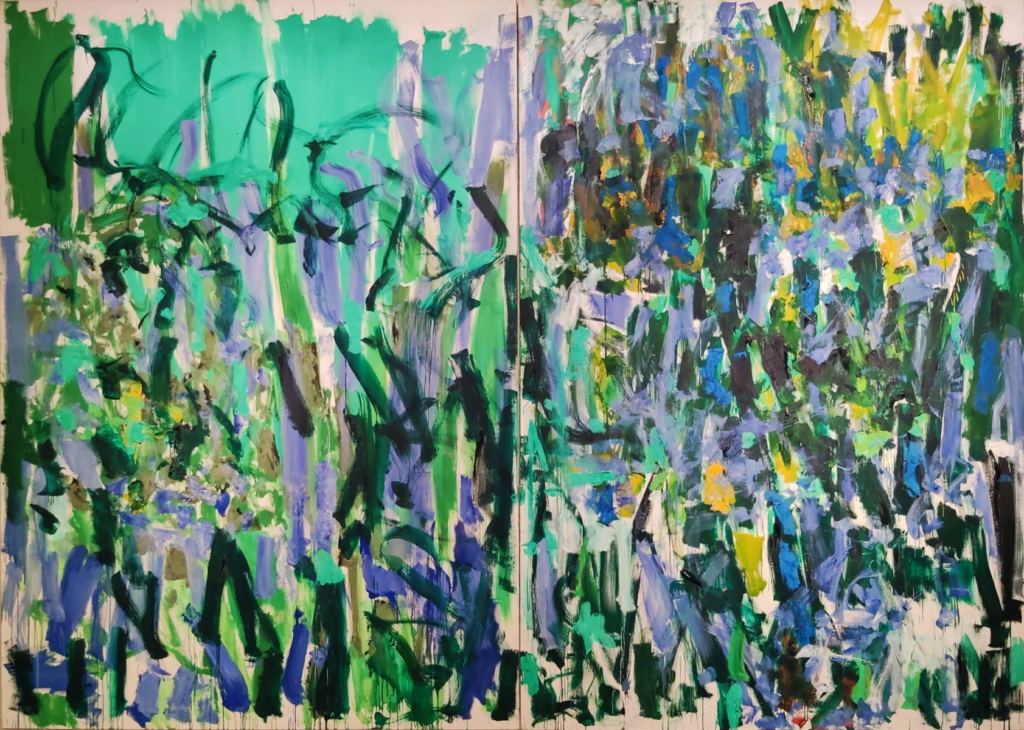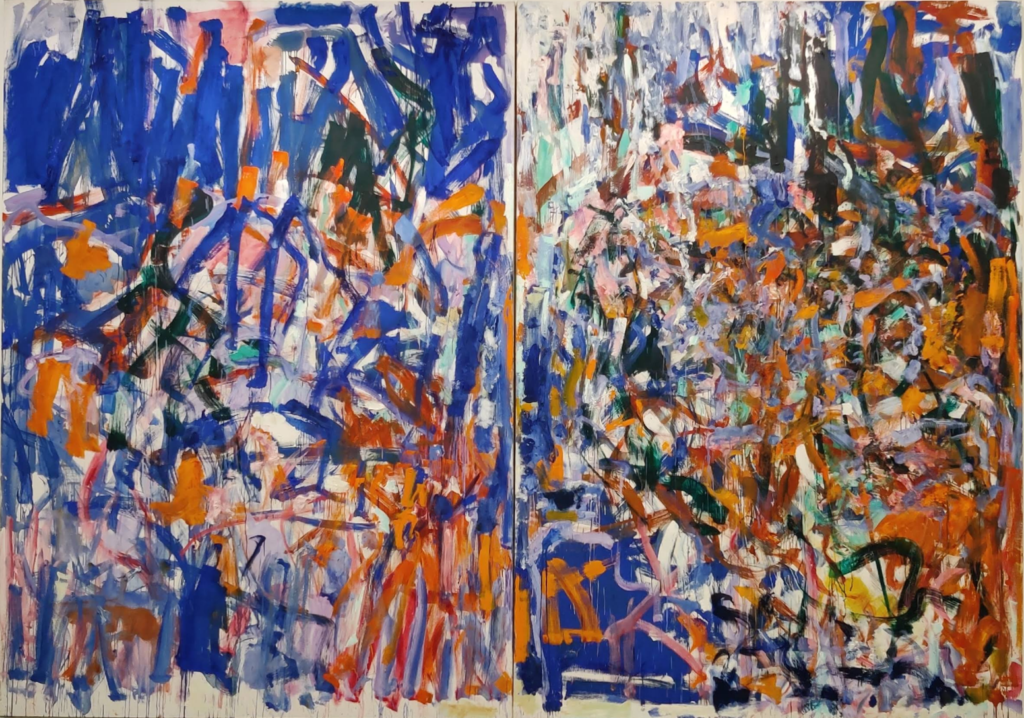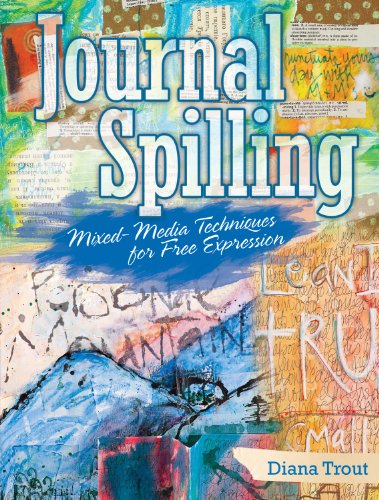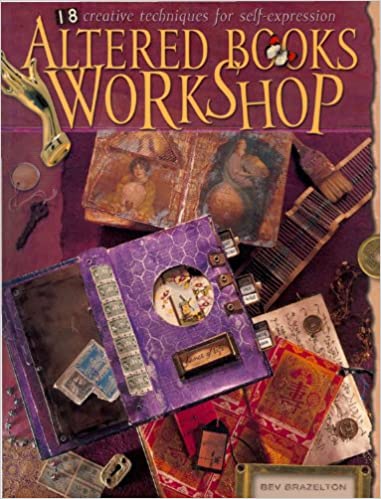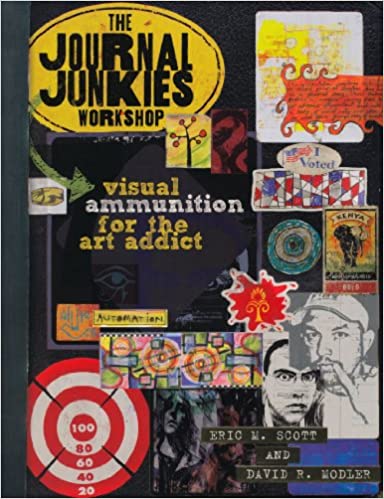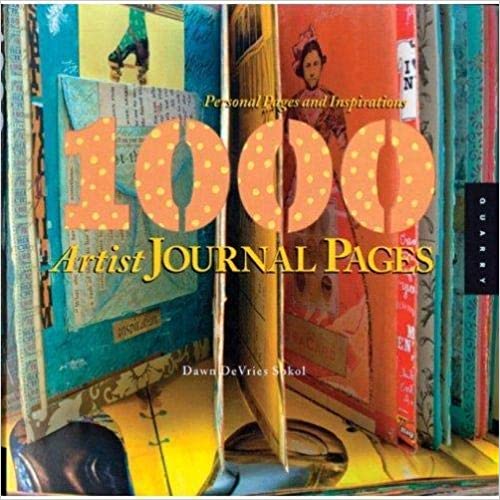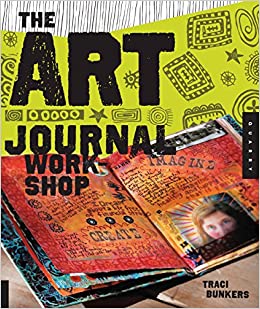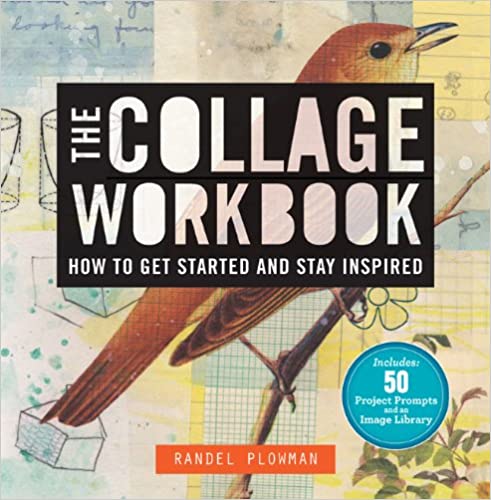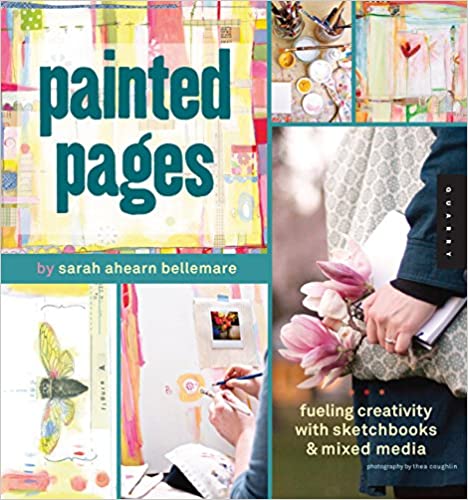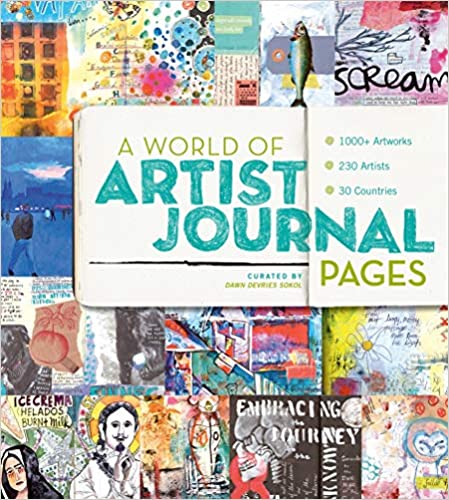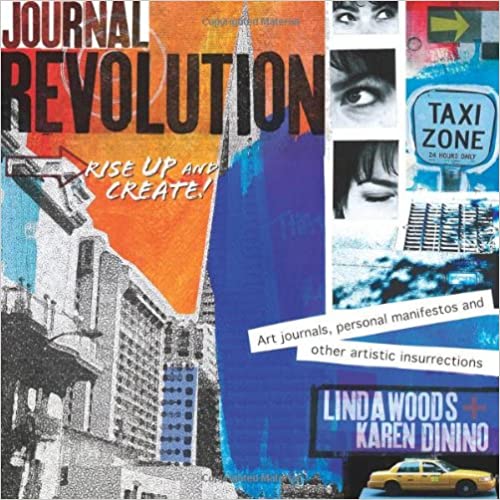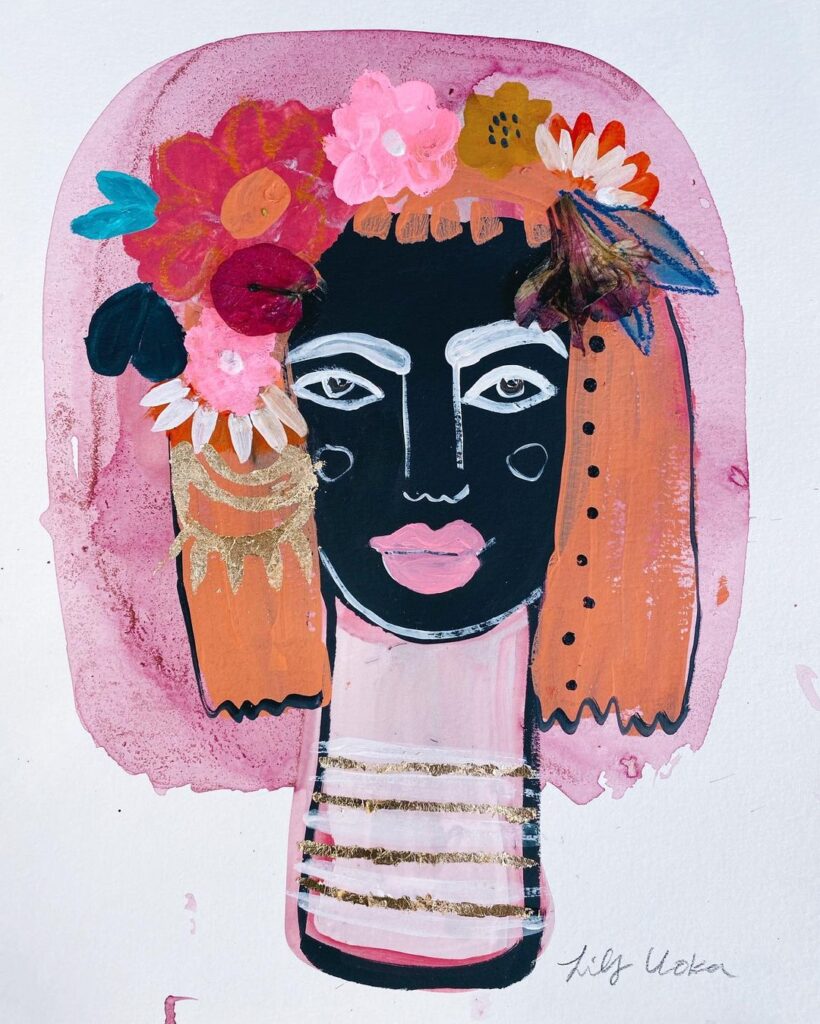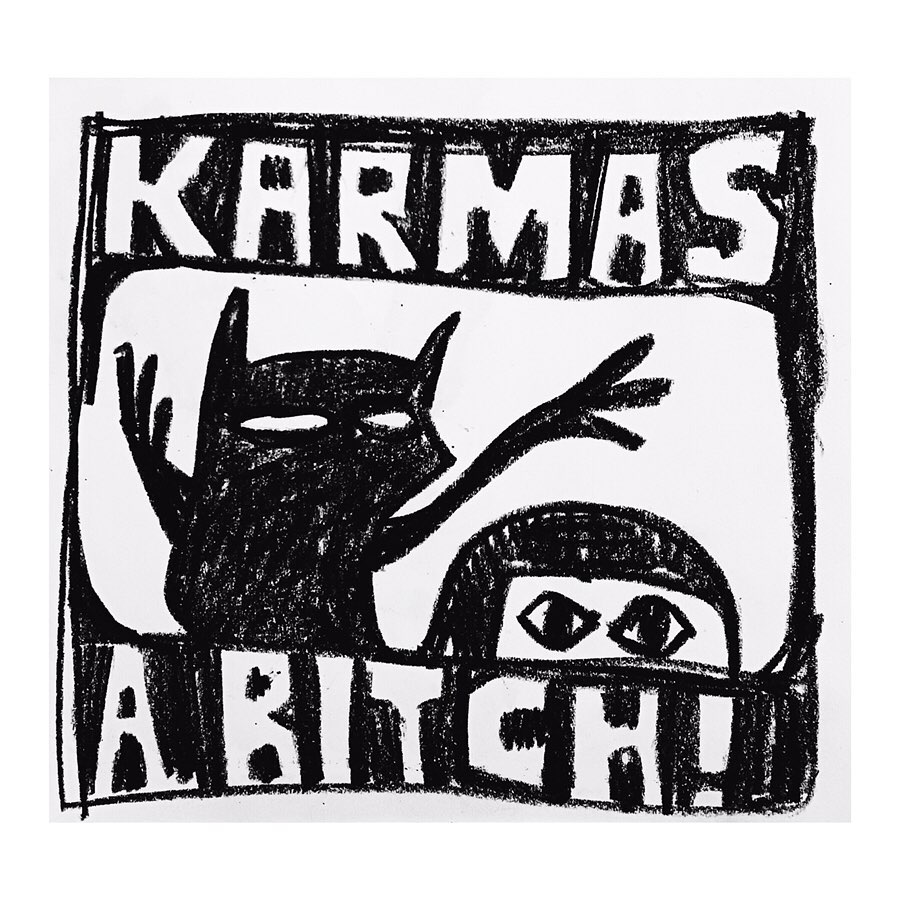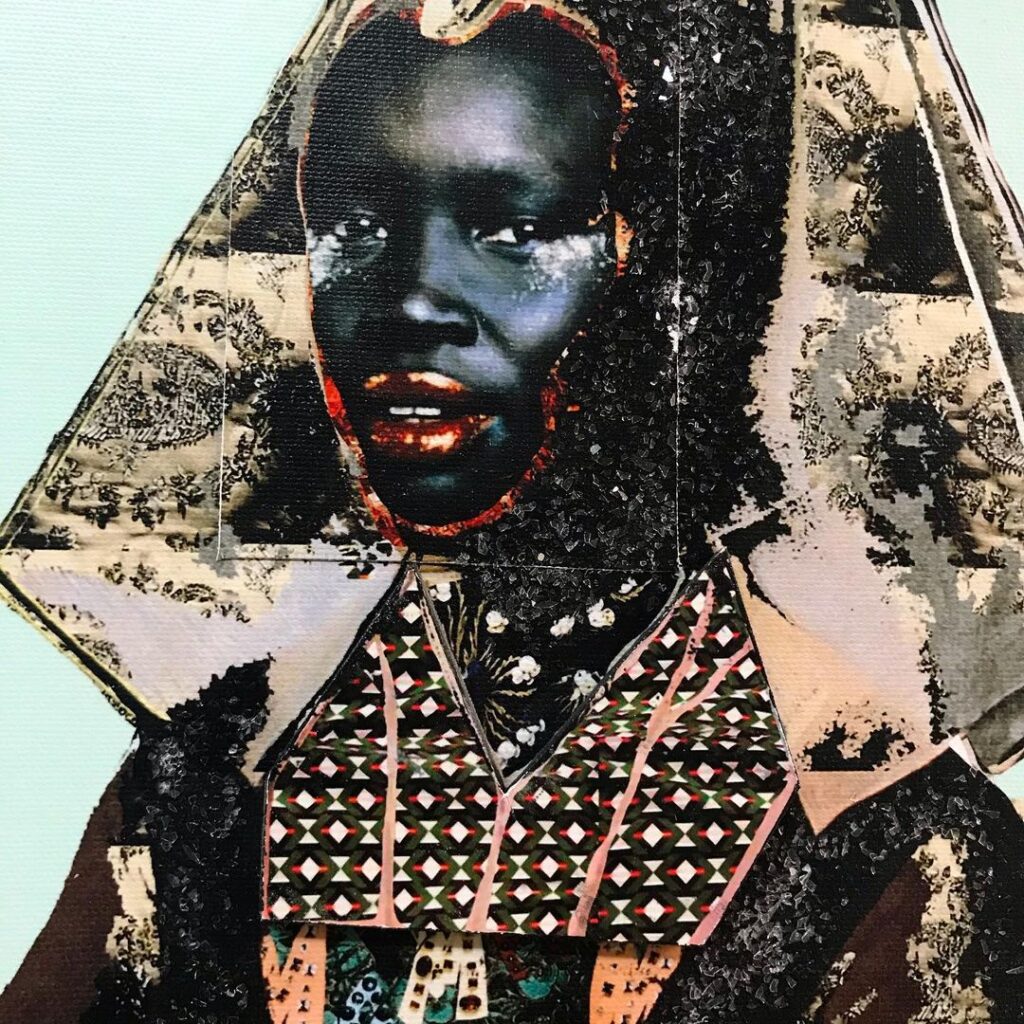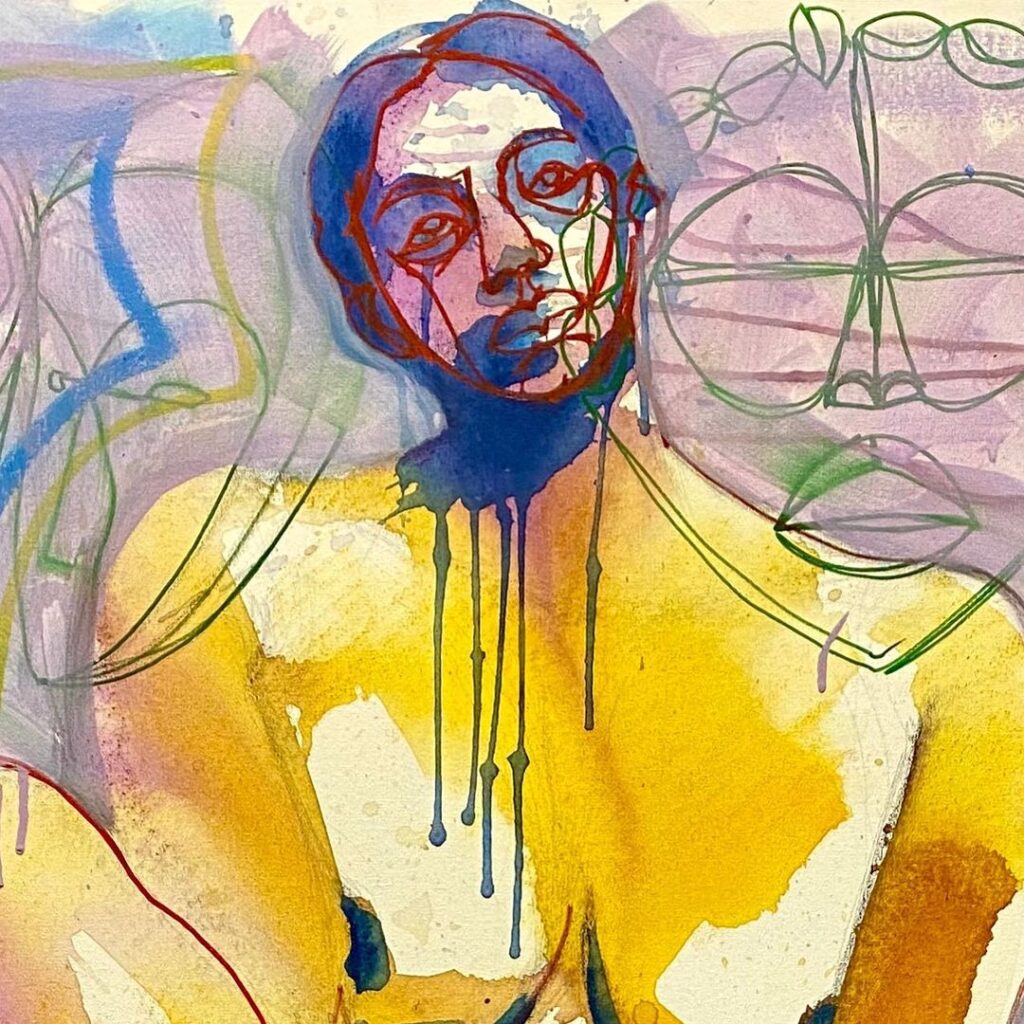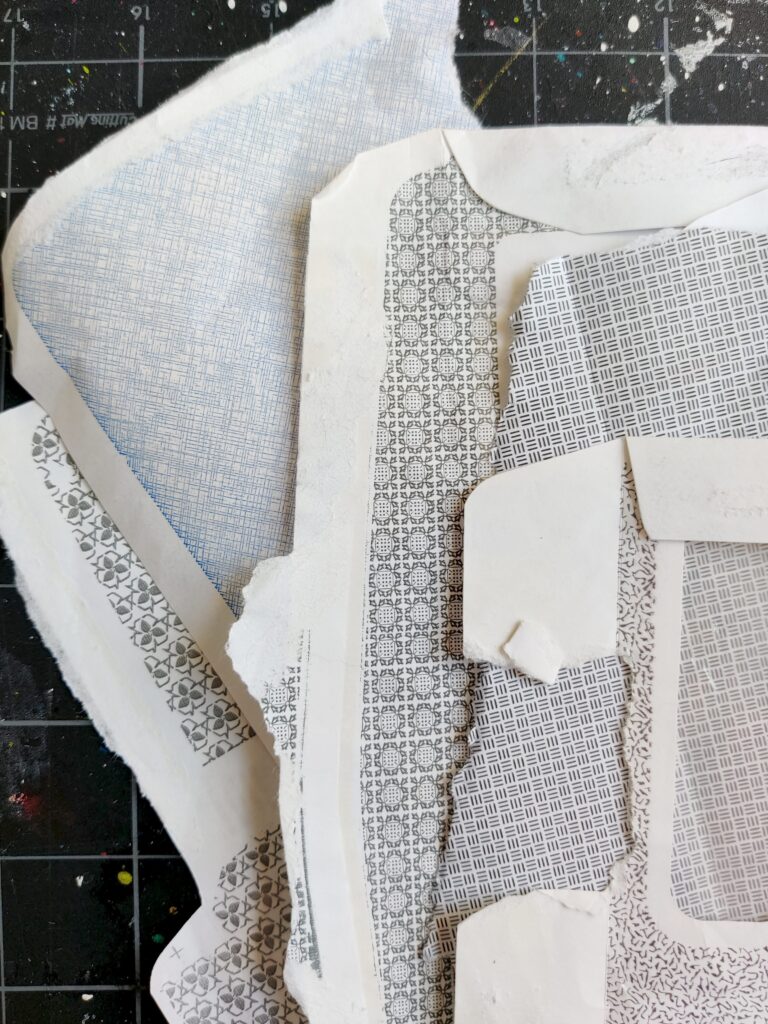
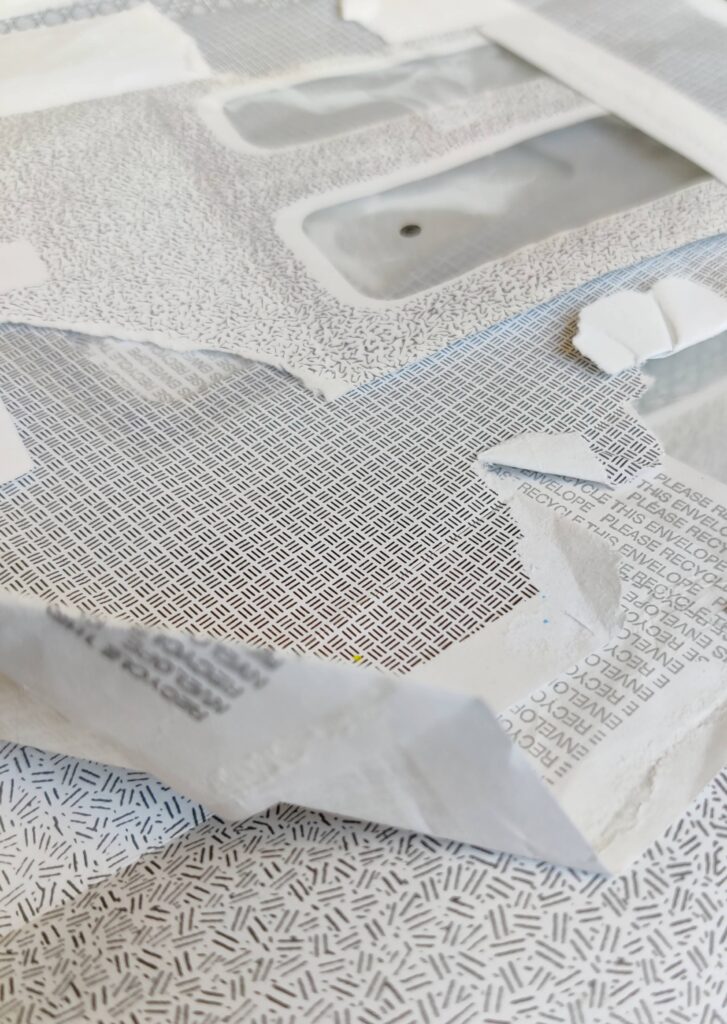
I use a variety of papers in my collage foundations for my art. One of favorites is security envelopes: they’re free in abundance (hello, junk mail), come in a variety of color and pattern, and add great texture to a collage.
Generally, I balance them with warmer-toned collaged papers like vintage book pages, or papers that are darker or lighter for contrast.
This afternoon, though, I collaged an index card using only security envelopes and a glue stick. The result is interesting — it reminds me of patchwork denim.
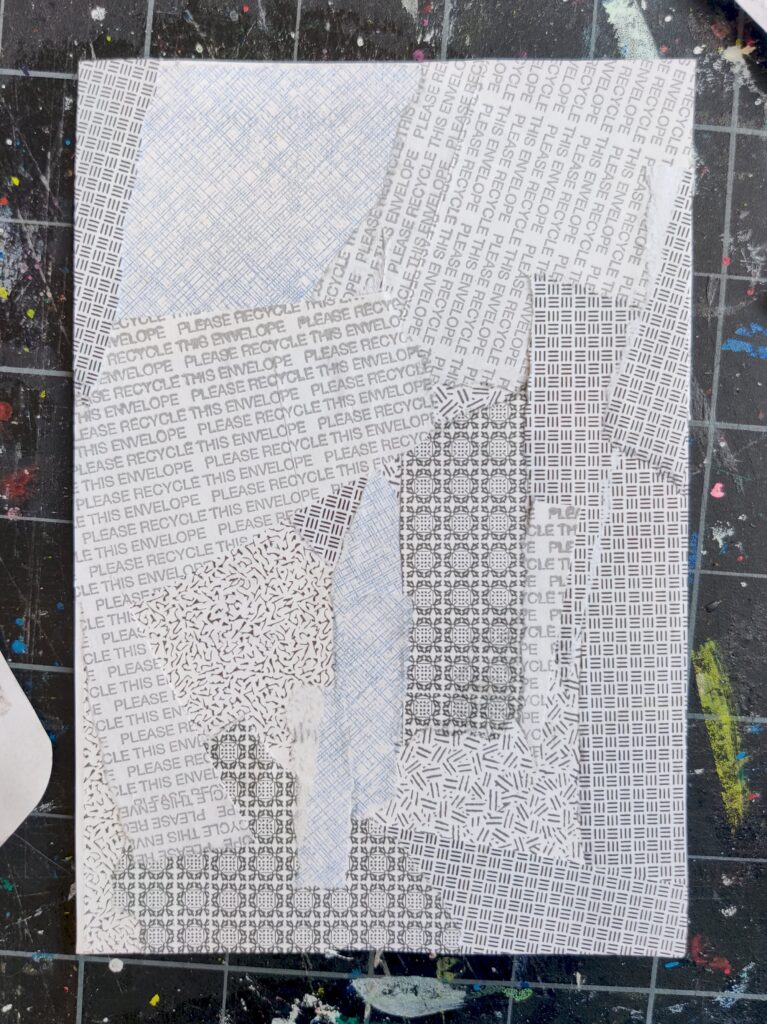
Other artists also incorporate these papers into their work. Christine Tischio of TurnstyleART uses them to create well-known character collages. Elizabeth Duffy creates beautiful lantern-like installations. Scraps of security envelopes pop up in Austin Kleon’s collages, too.
There’s also a host of inspiration on Instagram — check out #SecurityEnvelopePatterns.

